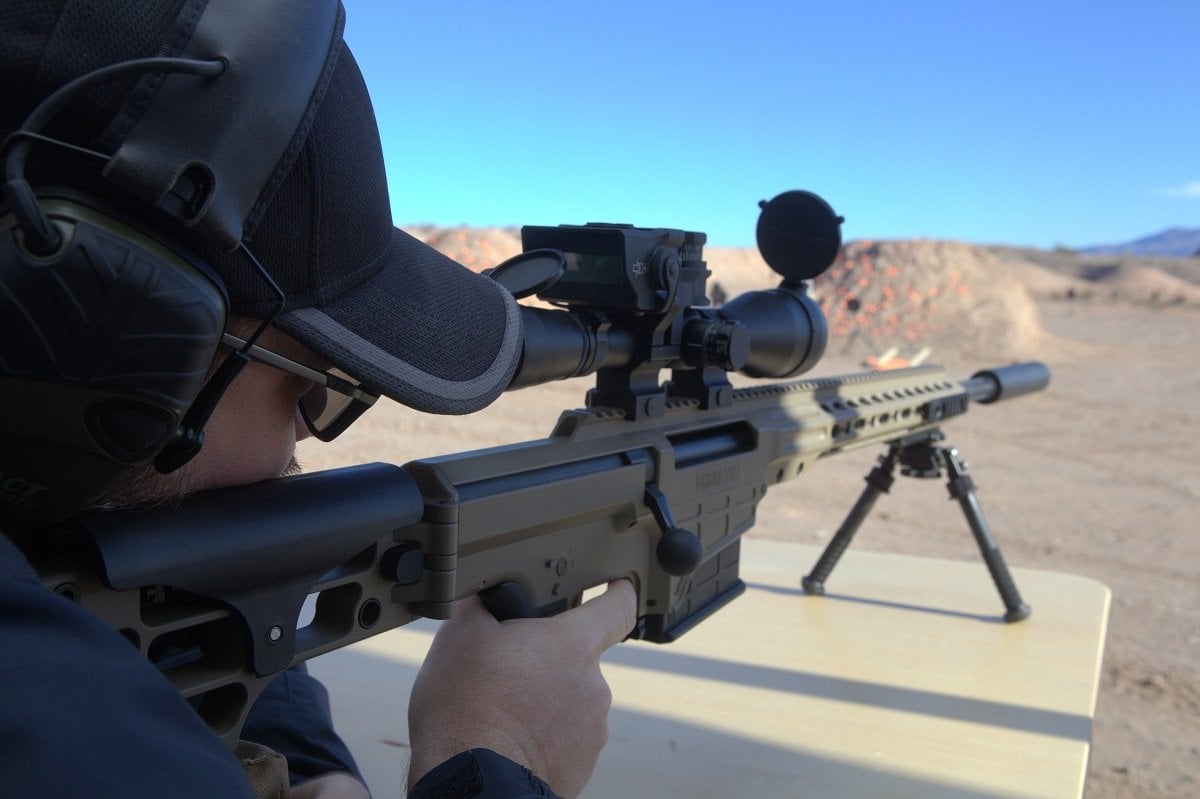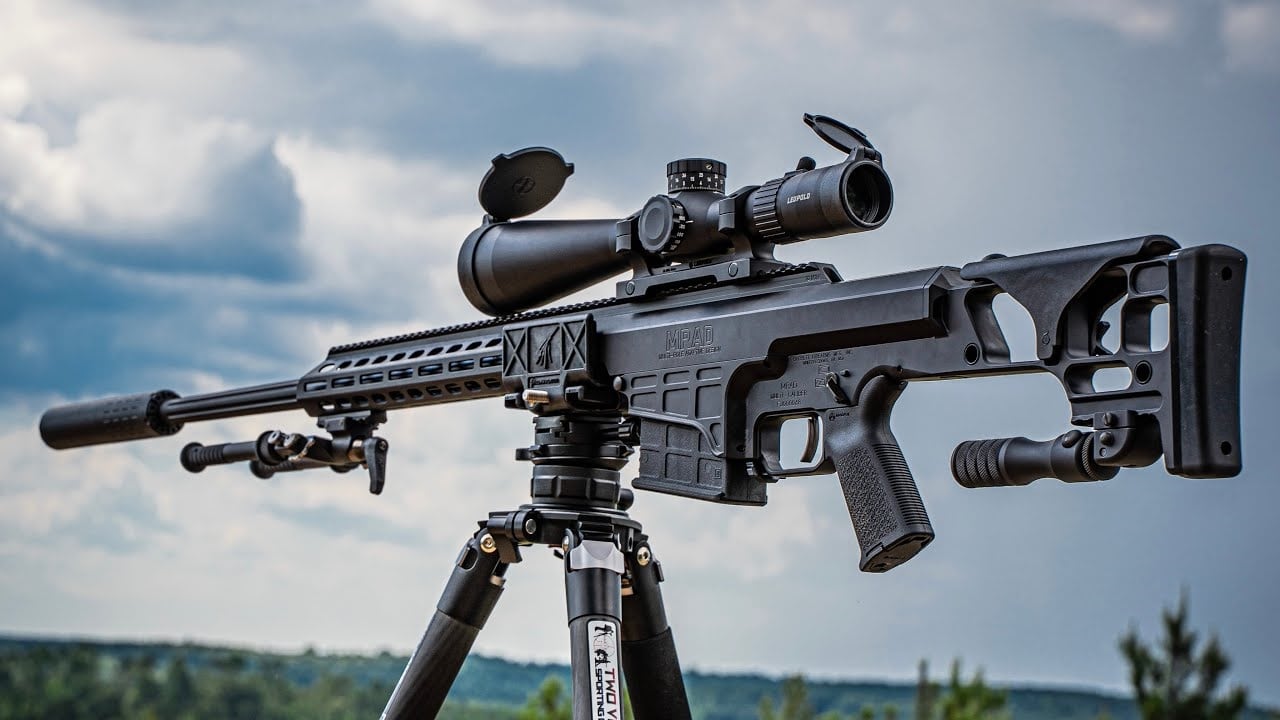In 2009, the United States Special Operations Command (USSOCOM) was looking for a new rifle through its Precision Sniper Rifle (PSR) competition. Barrett developed and entered its Multi-Role Adaptive Design (MRAD) sniper rifle into the contest. They lost the bid that year, but the MRAD was already making waves and Barrett kept improving its new rifle.
Then in 2019, the Department of Defense (DoD) selected the MRAD as its newest Advanced Sniper Rifle. Barrett got their contract, but in truth, gun enthusiasts are the real winners here. Let’s see what convinced Uncle Sam that this would be a great gun for our folks in uniform.
For starters, there’s the quality and thought Barrett put into the design of the MRAD. The monolithic upper receiver is machined from 7000-series aluminum. The upper features a full-length Picatinny rail with a special taper for long-distance precision.
And if the Picatinny top rail isn’t enough? The MRAD’s handguard also has mounting slots at the 3, 6, and 9 o’clock positions for long range optics or other essential accessories. Fans of even more accessories will like the rail that’s located on the buttstock, perfect for a monopod.
The bolt action of the MRAD is also both interesting and utilitarian. The bolt moves through an enclosed, self-lubricating polymer guide. This dust cover helps the action move smoothly. It also helps keep the elements outside of the gun from getting into it.
And though the “M” in MRAD stands for “Multi,” the name of this gun’s game is “Modularity.” More specifically, this single rifle has at least eight different caliber options. These calibers include .338 Lapua Magnum, .300 Winchester Magnum, .308 Winchester, and more. And that’s only the beginning of how customizable the MRAD can be.
First of all, not all caliber-changing rifles are created equal. The MRAD is great because switching calibers is actually easy. Just loosen two Torx screws, remove and swap barrels, change out the bolt, and retighten the screws. No headspace checks or gauges necessary!
What’s more, each component of this gun is easy to take apart and swap out if necessary. The upper receiver breaks from the lower, shotgun-style. This allows for easy cleaning or maintenance, though you can also fully remove the upper if you’d like.
The trigger assembly takes a modular approach, too. It’s simple to remove the entire trigger assembly—no tools needed. From there, a new or different trigger “cassette” can take its place. Or you can adjust the pull weight of the trigger and pop the cassette back in and you’re good to go.
The MRAD uses 10-round, double stacked magazines. And like using the MRAD overall, magazine changes are simple and easy. The mag release is partly cut away and has an
ambidextrous paddle-style release. This allows you to switch magazines without changing your firing grip.
The pistol grips and safety selector are both of the familiar AR-style. And like the mag release, the safety is also ambidextrous. It’s quick and easy to swap the selector from one side of the rifle to the other. (No worries if you’re a leftie with this gun!).
Similarly, the folding buttstock accommodates individual shooters’ needs. It requires no tools to adjust the length-of-pull or the cheek piece. A single button push allows the stock to fold. This reduces the gun’s overall length from about 47 inches to around 40 inches.
At about 11–14 plus pounds (depending on configuration), this is a heavy rifle. Some liken it to a ship’s anchor, which sounds none-too-fun to carry around. But for long-distance, precision shots, that’s what you need. And Barrett brings quality along with the weight of the MRAD sniper rifle.
The groupings for this gun can range from around 1 MOA to less than .5 MOA, depending on the shooter. In other words, the MRAD is so accurate that the results lie more squarely on the shooter rather than the gun. Additionally, there are no complaints to be had about the reliability of the MRAD.

Barrett’s MRAD Sniper Rifle. Image: Creative Commons.
That said, some do find the MRAD’s recoil abrasive. However, this gun is well-built so that the recoil you feel at least lands properly. It is not unreasonable for the power of this gun. In fact, the only true disadvantage to the MRAD is its price tag, which runs around $6,000.
So should you consider buying an MRAD for yourself? The truth is that you may not need such a high-powered, high-end sniper rifle as a casual shooter. But if you have the cash to spare and you’re in LE or you’re a competition shooter? Then maybe an MRAD would be an appropriate rifle to call your own.
There’s no two ways about it: Barrett’s MRAD sniper rifle is a great precision gun. It’s reliable, it’s customizable, and you can easily tear it down and even change its caliber. It may be a little heavy and more than a little pricey. But for the quality, the accuracy, and its ease-of-use, it is well worth it.
Richard Douglas is a firearms expert and educator. His work has appeared in large publications like The Armory Life, Daily Caller, American Shooting Journal, and more. In his free time, he reviews optics on his Scopes Field blog. This first appeared in the National Interest

